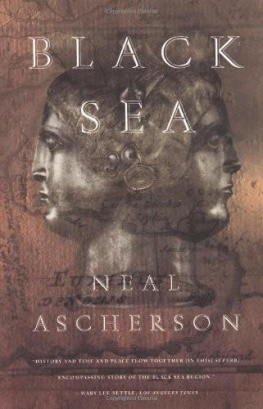The Catholic Calumet
EARLY AMERICAN STUDIES
SERIES EDITORS
Daniel K. Richter, Kathleen M. Brown,
Max Cavitch, and David Waldstreicher
Exploring neglected aspects of our colonial, revolutionary, and early national history and culture, Early American Studies reinterprets familiar themes and events in fresh ways. Interdisciplinary in character, and with a special emphasis on the period from about 1600 to 1850, the series is published in partnership with the McNeil Center for Early American Studies.
A complete list of books in the series is available from the publisher.
Copyright 2012 University of Pennsylvania Press
All rights reserved. Except for brief quotations used for purposes of review or scholarly citation, none of this book may be reproduced in any form by any means without written permission from the publisher.
Published by
University of Pennsylvania Press
Philadelphia, Pennsylvania 19104-4112
www.upenn.edu/pennpress
Printed in the United States of America on acid-free paper
10 9 8 7 6 5 4 3 2 1
Library of Congress Cataloging-in-Publication Data
Leavelle, Tracy Neal.
The Catholic calumet : colonial conversions in French and Indian North America / Tracy Neal Leavelle. 1st ed.
p. cm. (Early American studies)
Includes bibliographical references and index.
ISBN 978-0-8122-4377-2 (hardcover : alk. paper)
1. JesuitsMissionsNew FranceHistory. 2. Indians of North AmericaMissionsNew FranceHistory. 3. Indians of North AmericaNew FranceReligion. I. Title. II. Series: Early American studies.
F1030.7.L43 2012
299.7dc23
2011024364
Chapter 1
Spiritual Gifts
Conversion as Cross-Cultural Practice
A delegation of Illinois Indians on a diplomatic mission astonished the residents of New Orleans in 1730 with their ardent participation in the Catholic ritual life of the colonial capital. The Jesuit missionary Mathurinle Petit observed that during their three-week stay [the Illinois] charmed us by their piety, and by their edifying life. Every evening they recited the rosary and every morning they heard me say Mass. People crowded into the church to witness the spectacle of savage Indians worshiping and singing before the altar. The highlight for the audience was a responsive Gregorian chant in which Ursuline nuns chanted the first Latin couplet and the Illinois continued the other couplets in their language in the same tone. The Illinois appeared to be very well educated in Catholic practice, pausing during their daily activities to recite a variety of prayers. To listen to them, concluded the priest, you would easily perceive that they took more delight and pleasure in chanting these holy Canticles, than the generality of the Savages. Le Petit was correct in a sense. The inhabitants of some of the Illinois villages had developed a strong attachment to Christianity through years of interaction and exchange with the French.
Illinois leaders Chicagou and Mamantouensa arrived in the city at the head of the delegation to show solidarity with their French allies who were embroiled in deadly conflicts with Native nations in the lower Mississippi valley. In an audience with the French governor, Chicagou presented two calumets, or ceremonial pipes, one symbolizing the shared French-Illinois attachment to Christianity and the other the diplomatic and military alliance between them. The Illinois had since the middle of the seventeenth century engaged the French in calumet ceremonies to sustain friendly relations. In the 1690s, the Illinois converted in large numbers to Catholicism, adding a significant new dimension to the relationship. The connection now required two calumets, and one of these thoroughly Native ritual objects represented the religious traditions introduced by the French. This Catholic calumet seems an apt symbol for the ways in which the Illinois incorporated Catholicism into their lives. The calumet was an indigenous cultural vessel that now carried new meaning, just as the Catholic prayers the Illinois chanted in the New Orleans church in their own Native language contained Illinois cultural concepts.
Indeed, the Illinois defined themselves as Christians through the ritual of prayer, through religious practice. Le Petit commented that the Illinois were almost all of the prayer (that is, according to their manner of expression, that they are Christians). The Illinois term was araminatchiki, for those who pray. Araminatchiki spoke, sang, and chanted Illinois words in a new Christian order and context, but these words could never be emptied entirely of their indigenous meaning. Ambiguity reigned in the volatile colonial world the Indians and French made together in the seventeenth and eighteenth centuries. Effective navigation of this swiftly changing world required the kind of cultural creativity on vivid display in the houses of worship and colonial offices of New Orleans. The appearance of a Catholic calumet in 1730 represented the results of many decades of encounter and cultural translation, a particularly compelling example of the exchange of spiritual gifts.
A well-known early encounter between the Illinois and the French revealed the importance of these gifts in establishing and maintaining relationships. On 17 May 1673, the Jesuit Jacques Marquette embarked on his famous exploration of the Mississippi with the French trader Louis Jolliet and a small group of men. It took the travelers a month of hard work to make their way from the mission of Saint Ignace at Michilimackinac to Green Bay and, finally, into the mighty river itself. The party paddled down the Mississippi for a week without seeing any other people. Finally, on 25 June, they spotted a path leading inland from the waters edge. Alone, Marquette and Jolliet followed the trail and approached a group of villages near a river. They shouted to announce their presence and waited for the villagers to greet them.
Marquette recounted that four old men walked slowly toward the two Frenchmen. Two of the men carried calumets, beautiful ceremonial pipes finely ornamented and Adorned with various feathers. Silently, they raised the pipes to the sun. Marquette was relieved to see the calumet ceremony because he knew the Indians reserved such treatment for friends and potential allies. He also noted that the men wore cloth, which indicated that they had traded in French goods. The men stopped before the explorers, and Marquette asked who they were. They replied that they were Illinois and then offered the calumets for the Frenchmen to smoke. The four Illinois men invited Marquette and Jolliet to enter the village, where the rest of the people waited impatiently to greet their foreign guests.
A long series of formal ceremonies followed. At the door of a cabin, an old man, entirely nude according to the missionary, extended his hands toward the sun and said, How beautiful the sun is, O frenchman, when thou comest to visit us! All our village awaits thee, and thou shalt enter all our Cabins in peace. Marquette and Jolliet entered the cabin, where a crowd of people watched them carefully. The priest heard some people say quietly, How good it is, My brothers, that you should visit us. The Frenchmen smoked the calumet again and then accepted an invitation from a great Captain to visit his nearby settlement for a council. Many curious Illinois who had never seen the French before lined the path to the village. The Illinois leader greeted them at his cabin flanked by two old men. All three were nude, and they held a calumet toward the sun. The two explorers smoked again and entered the cabin.








